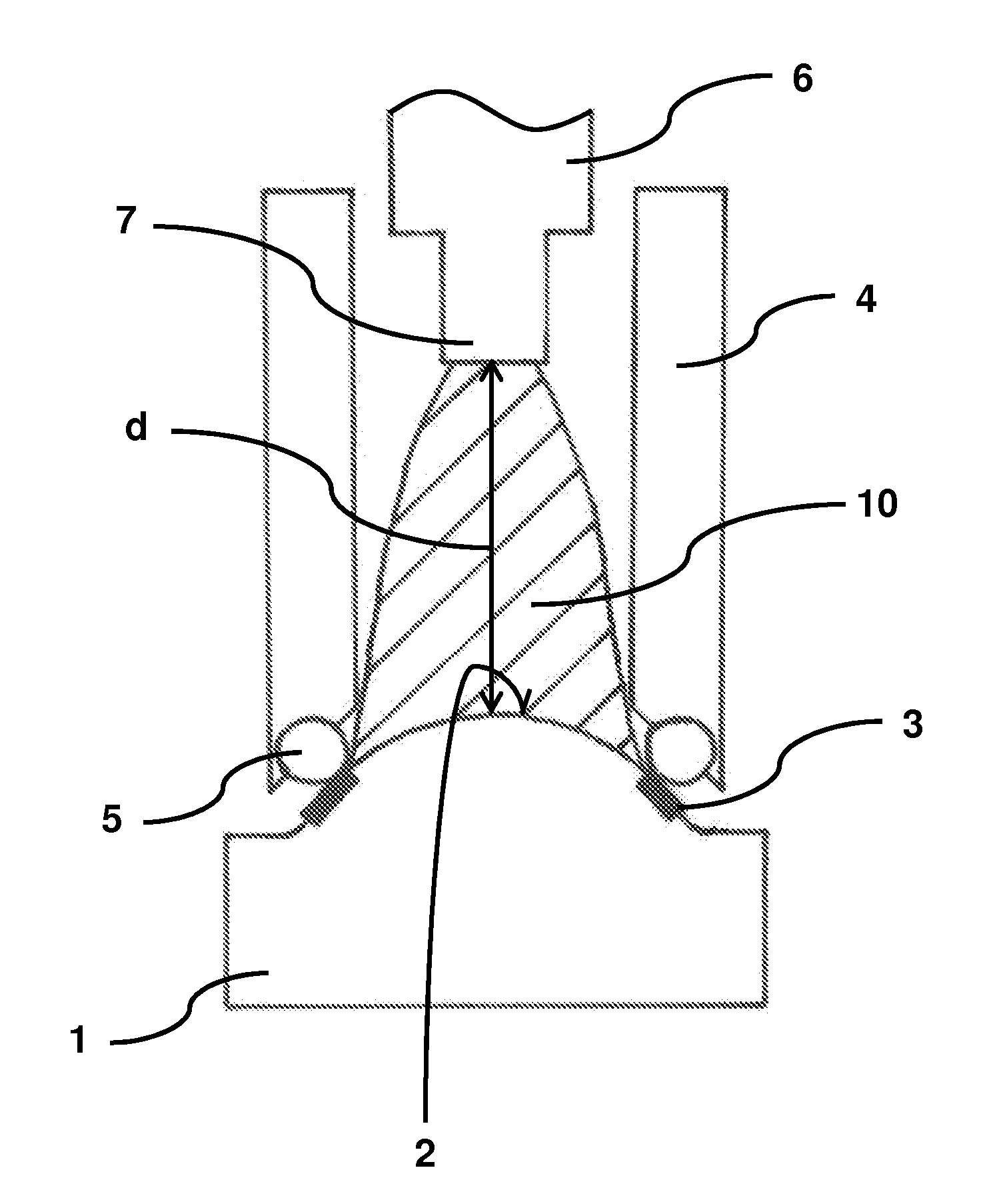Method of Treating a Lens Forming Surface of at Least One Mold Half of a Mold for Molding Ophthalmic Lenses
- Summary
- Abstract
- Description
- Claims
- Application Information
AI Technical Summary
Benefits of technology
Problems solved by technology
Method used
Image
Examples
examples
[0042]In the following examples reusable molds are used comprising a female mold half made of glass (B-270, available from Schott, Germany) and a male mold half made of quartz glass (Lithosil-SQ1, available from Schott, Germany).
[0043]These molds are typically used in an automated continuous mass production process for manufacturing ophthalmic lenses, in particular for manufacturing soft contact lenses. Such a process is for example described in WO 2010 / 071691 from page 21, line 30 to page 23, line 3, as well as from page 5, line 35 to page 6, line 26, which is herein incorporated by reference. After each production cycle in a laboratory set up of said automated continuous manufacturing process, the mold halves are manually cleaned with a cleaning sponge soaked with 2-Propanol. After cleaning with the cleaning sponge the mold halves are rinsed with water and dried with pressurized air. After drying the concave lens forming surface on the female mold half and / or the convex lens formi...
PUM
| Property | Measurement | Unit |
|---|---|---|
| Time | aaaaa | aaaaa |
| Time | aaaaa | aaaaa |
| Time | aaaaa | aaaaa |
Abstract
Description
Claims
Application Information
 Login to view more
Login to view more - R&D Engineer
- R&D Manager
- IP Professional
- Industry Leading Data Capabilities
- Powerful AI technology
- Patent DNA Extraction
Browse by: Latest US Patents, China's latest patents, Technical Efficacy Thesaurus, Application Domain, Technology Topic.
© 2024 PatSnap. All rights reserved.Legal|Privacy policy|Modern Slavery Act Transparency Statement|Sitemap


